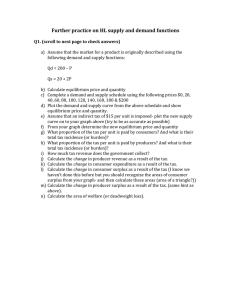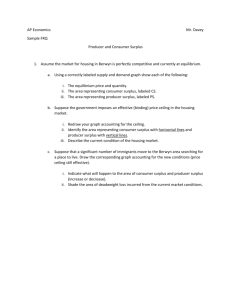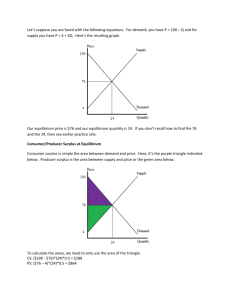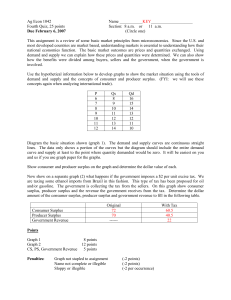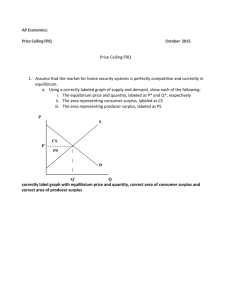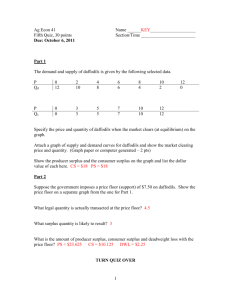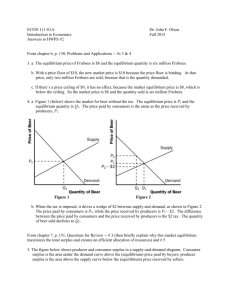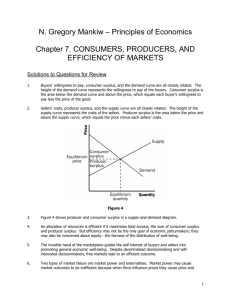this
advertisement
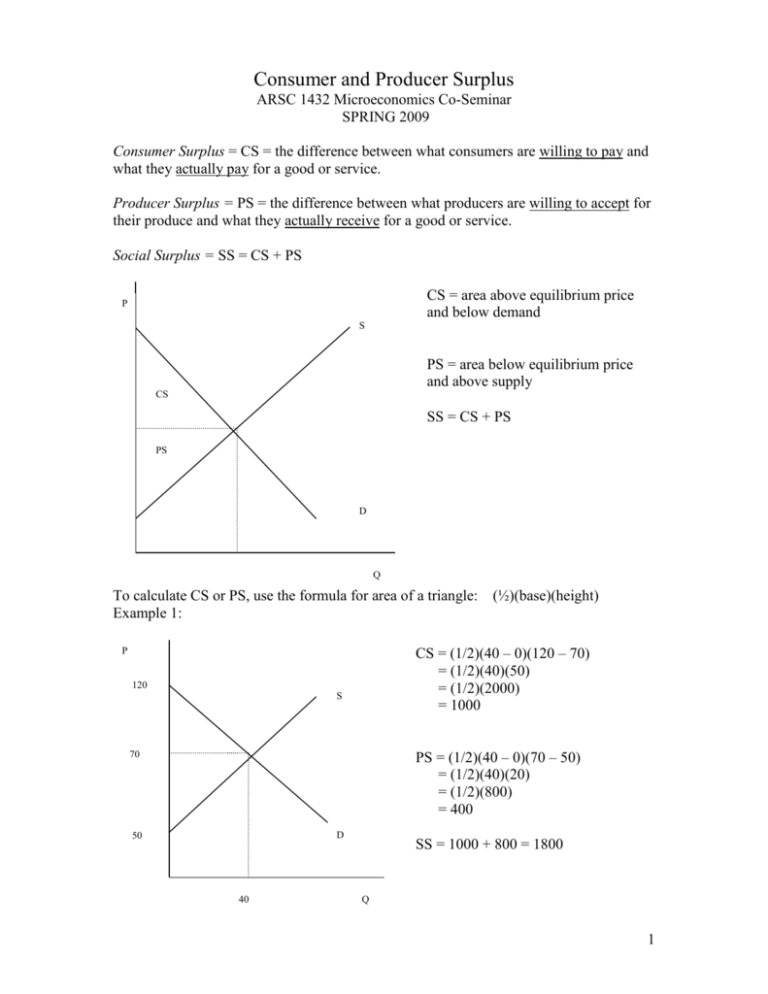
Consumer and Producer Surplus ARSC 1432 Microeconomics Co-Seminar SPRING 2009 Consumer Surplus = CS = the difference between what consumers are willing to pay and what they actually pay for a good or service. Producer Surplus = PS = the difference between what producers are willing to accept for their produce and what they actually receive for a good or service. Social Surplus = SS = CS + PS CS = area above equilibrium price and below demand P S PS = area below equilibrium price and above supply CS SS = CS + PS PS D Q To calculate CS or PS, use the formula for area of a triangle: Example 1: (½)(base)(height) CS = (1/2)(40 – 0)(120 – 70) = (1/2)(40)(50) = (1/2)(2000) = 1000 P 120 S PS = (1/2)(40 – 0)(70 – 50) = (1/2)(40)(20) = (1/2)(800) = 400 70 D 50 40 SS = 1000 + 800 = 1800 Q 1 Example 2: Ps = 40 + 4Qs Supply Equation Pd = 100 – 2Qd Demand Equation To find Equilibrium Ps*=Pd* at equilibrium they are equal so 40+4Qs=100-2Qd or 40+4Q=100-2Q since Qs=Qd also 6Q=60 Q*=60/6=10 Equilibrium quantity Now to find the price Ps*=40+ 4(10) = 80 or Pd*=100-2(10) = 80 So to graph we say how much is the price when the quantity demanded (or supplied) is zero in both equations Ps = 40 + 4(0)= 40 Pd = 100 – 2(0) = 100. These are the intercepts at the Y axis. To calculate the intercept at the X axis we say how much is the quantity demanded when the price is zero, so 0 = 100 -2Qd 2Qd=100 Qd=100/2=50 there is no need to calculate the X intercept for the supply equation. QuickTime™ and a TIFF (Uncompressed) decompressor are needed to see this picture. Since Consumer Surplus and Producer Surplus are represented by triangles, to calculate Base * Height their value you can utilize the formula for the area of a triangle = . 2 So Consumer Surplus is equal to ((100-80) x 10)/2 = (20 and Producer Surplus is equal to ((80-40) x 10)/2 = x 10)/2= 100 (40x 10)/2= 200 So Total Welfare equals Consumer Surplus + Producer Surplus = 100 + 200 = 300 2

